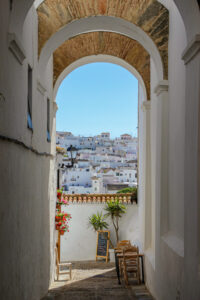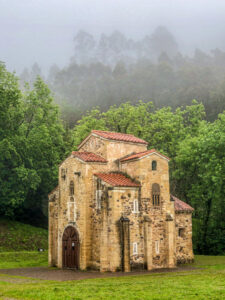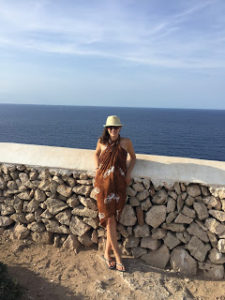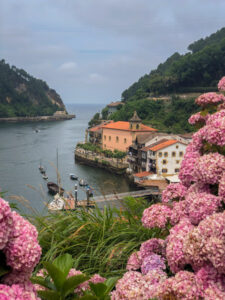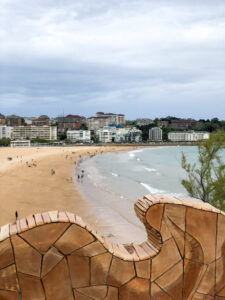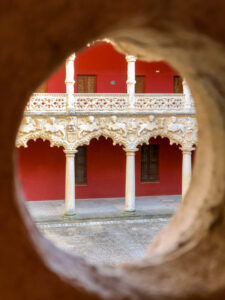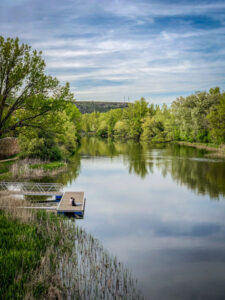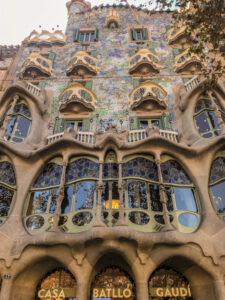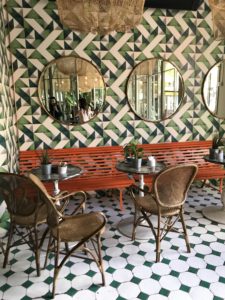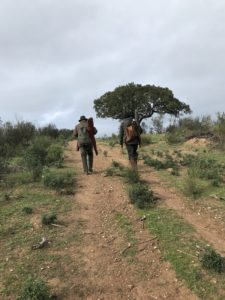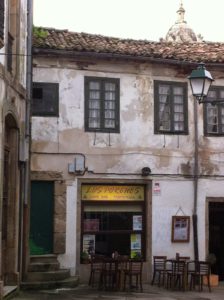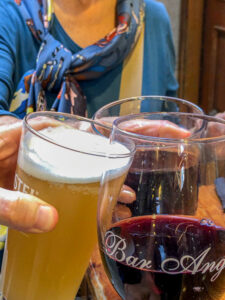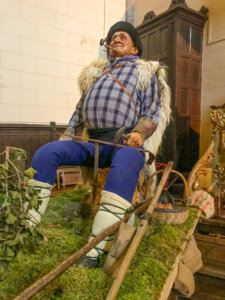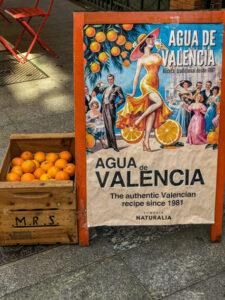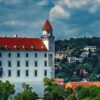Andalusia: gazpacho, salmorejo, pescaíto frito (fried fish); drink: rebujito
Asturias: cachopo (fried veal fillets with ham and cheese); drink: cider
Balearic Islands: coca (like a pizza), ensaimada, sobrasada
Basque Country: chuletón (grilled meat) or fish, txistorra (similar to a chorizo but thiner); drinks: sidra (cider) or txakolí (white wine). To experience the true Basque way of eating, head to a sagardotegi in the Astigarraga area near San Sebastián, preferably in the period between January and April. The typical menu includes tortilla de bacalao (cod omelette), chuletón (grilled meat) with peppers, cider, cheese, quince and nuts. Txotx!
Canary Islands: papas con mojo, ropa vieja, sancocho
Cantabria: sobaos pasiegos, quesada
Castile- La Mancha: pisto, Manchego cheese
Castille and León: cochinillo (grilled piglet), morcilla (blood sausage), sopa de ajo (garlic soup)
Catalonia: pa amb tomàquet (bread with tomato), calçots amb salsa romesco, escalivada, butifarra (sausage); drink: cava
Community of Madrid: cocido madrileño (stew), bocata de calamares (calamari sandwich), chocolate con porras y/o churros
Extremadura: migas extremeñas (fried bread crumbs), Torta del Casar cheese
Galicia: seafood (nécoras, percebes, almejas,zamburiñas), pulpo a feira (octopus ); drink: Albariño (white wine)
La Rioja: potatoes Rioja style (patatas a la riojana), lamb chops with vine shoots (chuletillas de cordero al sarmiento); drink: Rioja wines
Murcia: Murcian salad, zarangollo
Navarre: txistorra, vegetables; drink: patxarán
Valencian Community: paella, horchata, oranges, coca (cake)


